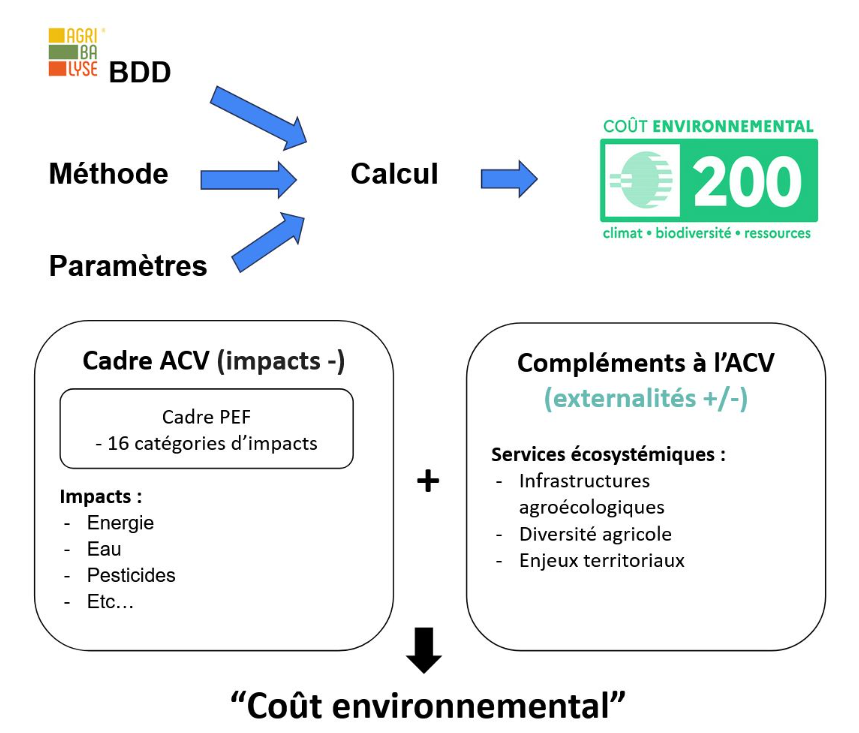The "environmental cost" calculation method is based on :
A few product-specific parameters, to be defined by the manufacturer/analyst (e.g. recipe, origin of ingredients, etc.).
The Agribalyse LCA database, which provides environmental values (e.g. impact of 1kg of conventional wheat, 1kwh of electricity, 1kg of glass, etc.).
The calculation method, which is an enriched version of the PEF (PEF-wise approach). The method contains the PEF indicators, weighting rules and complementary indicators.
It is described in detail on the web Ecobalyse tool, which enables calculations to be carried out according to the official method.
General method

The “environmental cost” is made up of 16 impact categories derived from the European PEF framework and “ecosystem services” supplements that reflect important environmental dimensions for the food sector, but which are still poorly taken into account by the PEF.
-
The 16 impact categories of the PEF method cover climate, water, air, soil and biodiversity, using a standardized method recognized at European level. https://fabrique-numerique.gitbook.io/ecobalyse/alimentaire/impacts-consideres#16-categories-dimpacts-pef
-
Complementary “ecosystem services” (outside LCA)
Certain agricultural practices may have positive externalities that cannot be taken into account by the PEF today. This applies in particular to issues of territorial biodiversity and resilience via ecological continuity, limiting habitat fragmentation, maintaining green screens and refuge areas, or natural regulation of crop pests... It is therefore proposed to supplement the LCA indicators with five key parameters identified with the ecologists and enabling the main gaps in the PEF for the food sector to be covered:
-
Hedgerows: refuge areas and source of biodiversity
-
Permanent grasslands: refuge areas and source of floral biodiversity in particular
-
Plot size: smaller plots increase buffer zones and landscape diversity
-
Territorial diversity: calculated using Simpson's index, reflects the integration of crops into diversified landscape mosaics favorable to biodiversity or, on the contrary, into homogeneous areas (e.g. monocultures).
-
Territorial balance: reflects the balance between animal and plant production on a departmental scale, with the balanced coupling of production contributing to the closing of nutrient cycles. In other words, the presence of a small amount of livestock production is valued at the end of the circularity, while “overloaded” areas are penalized.
For all these indicators, default values are provided for each production (e.g. wheat, corn, sunflower, etc.), differentiating between conventional and organic farming at this stage. Other labels may be added at a later date. These “ecosystem services” complements are converted into “impact points” and “deducted” from the “impact score”. They can represent up to 30% of the environmental score.
Full methodological details are available in the Ecobalyse documentation.
The environmental display method can be broken down into different levels of precision. (text under construction)


